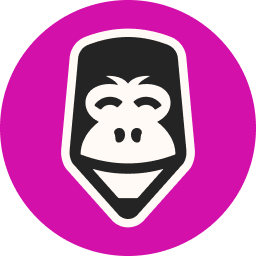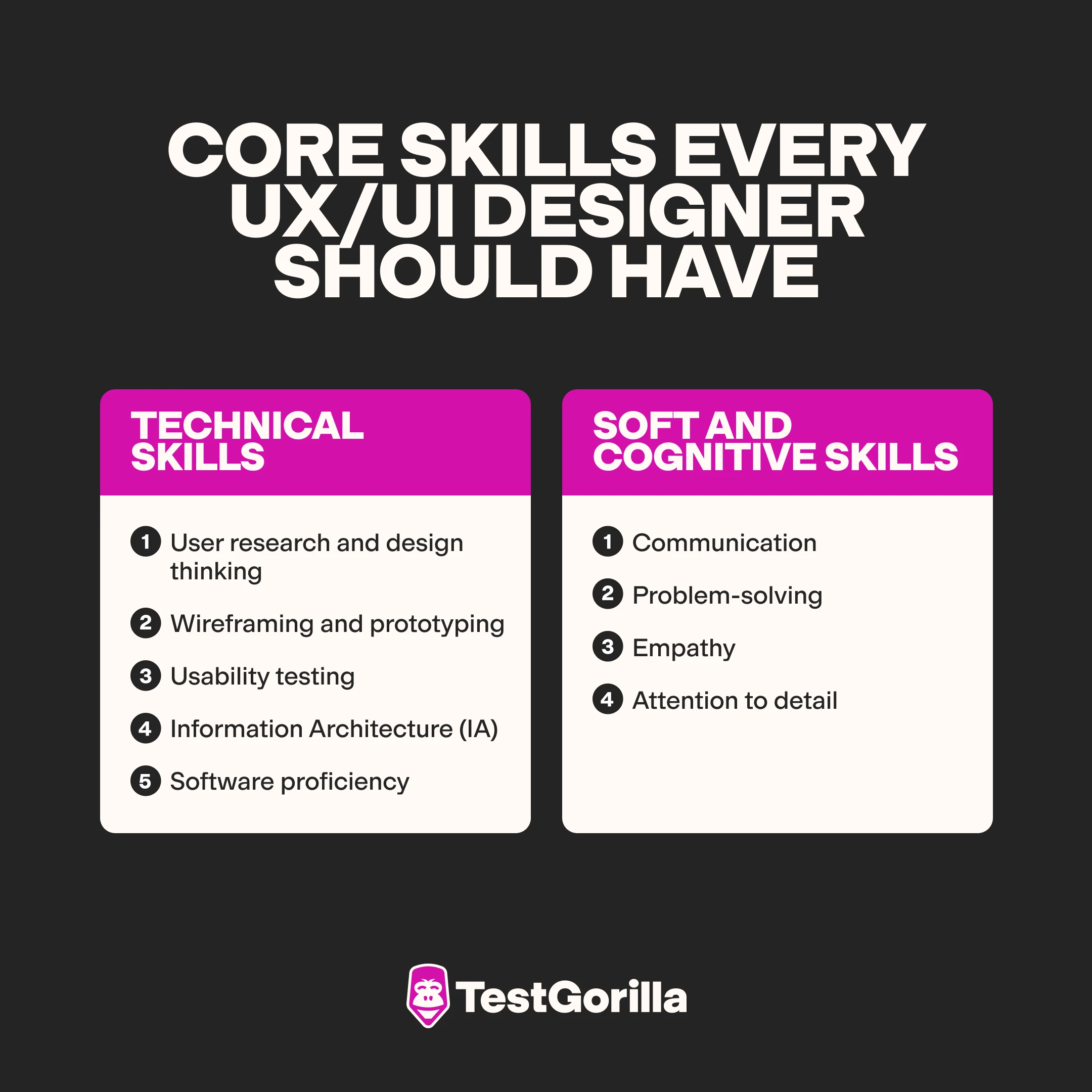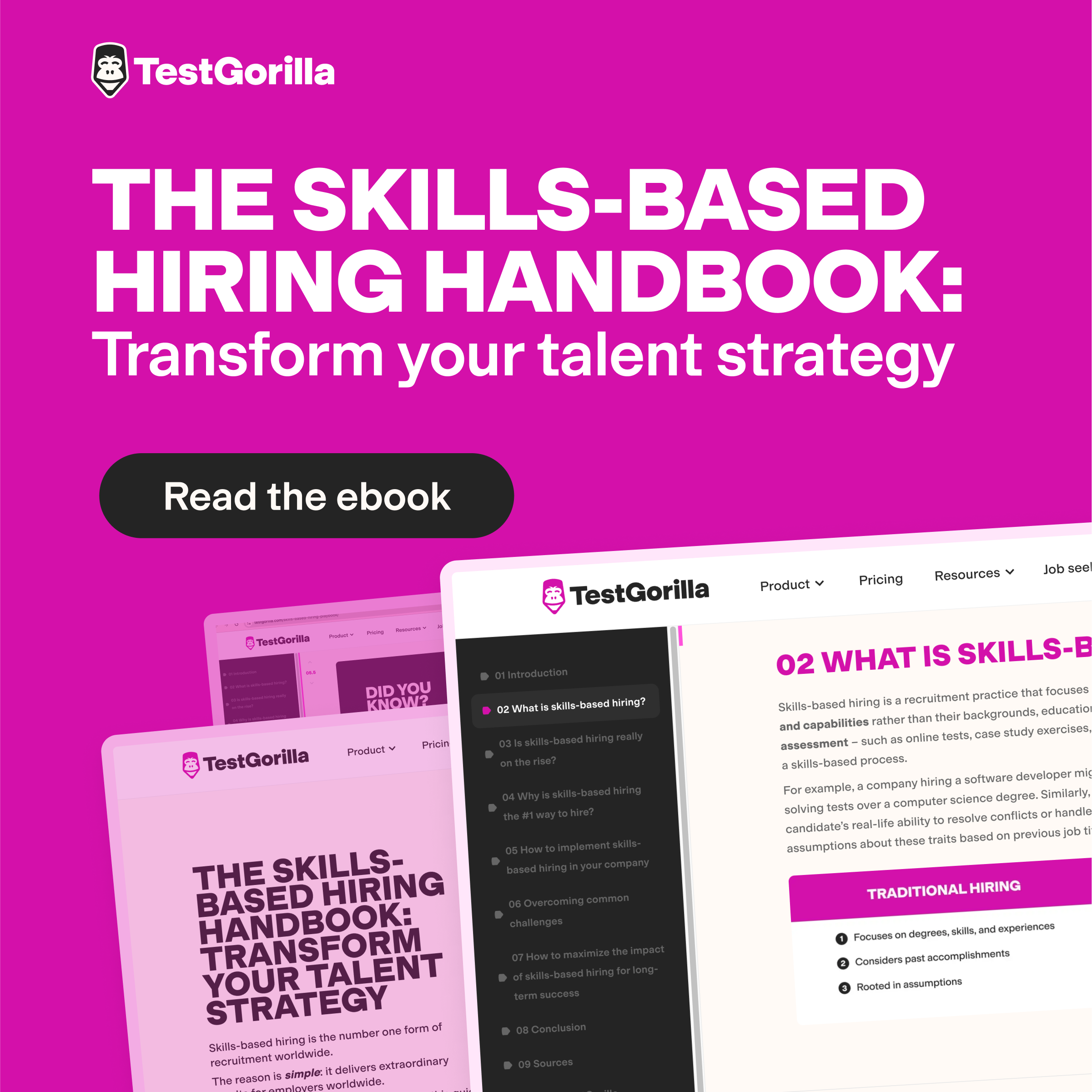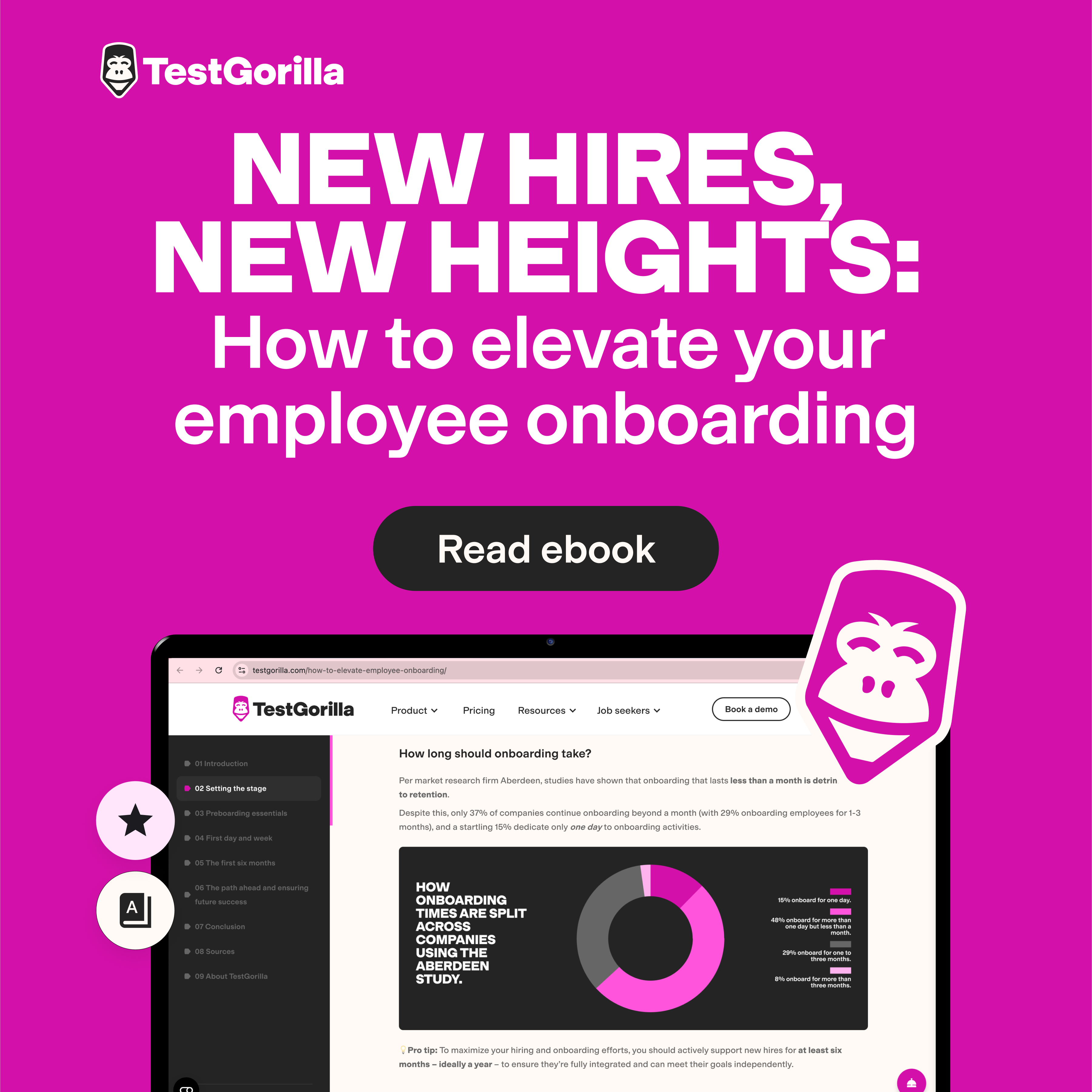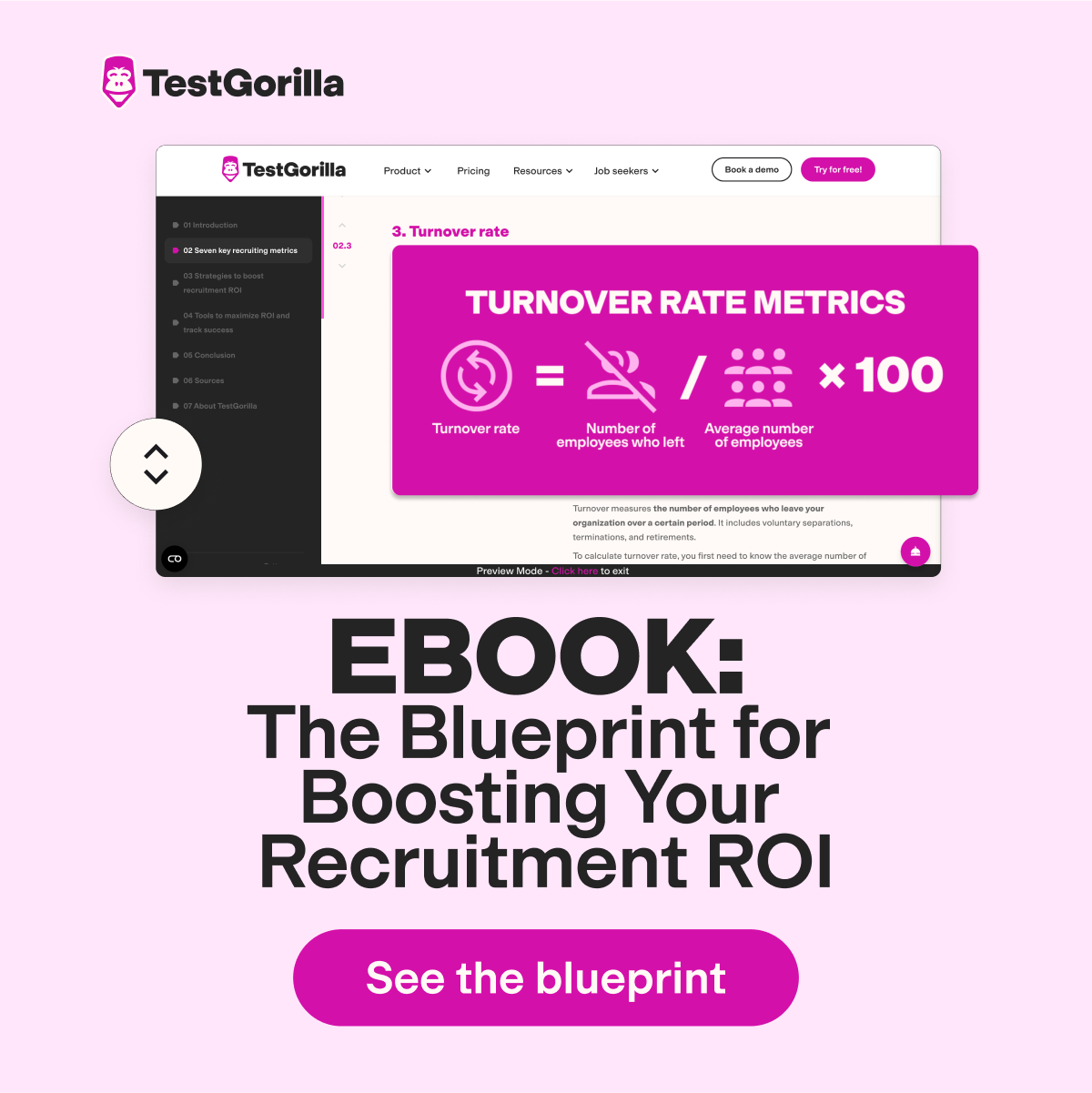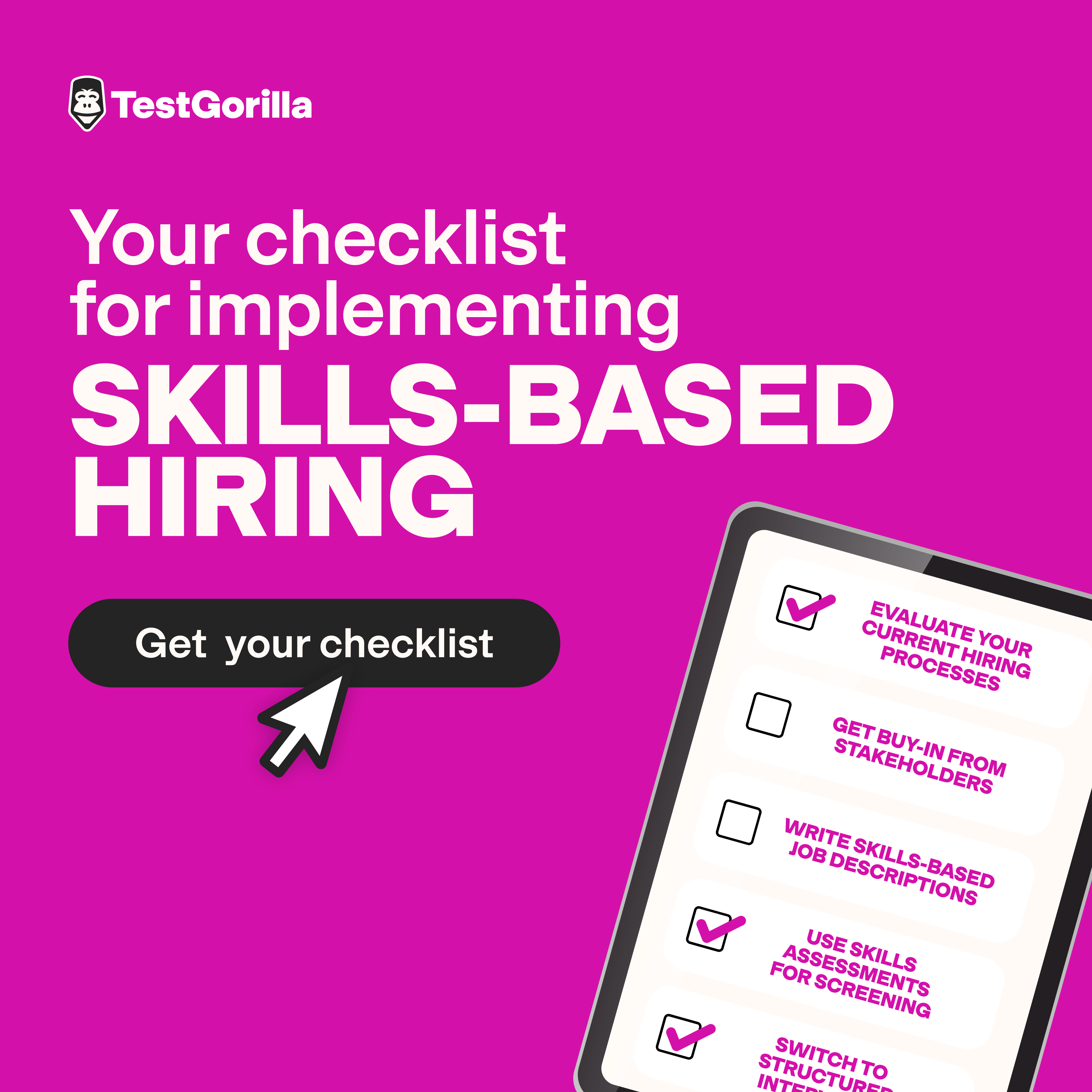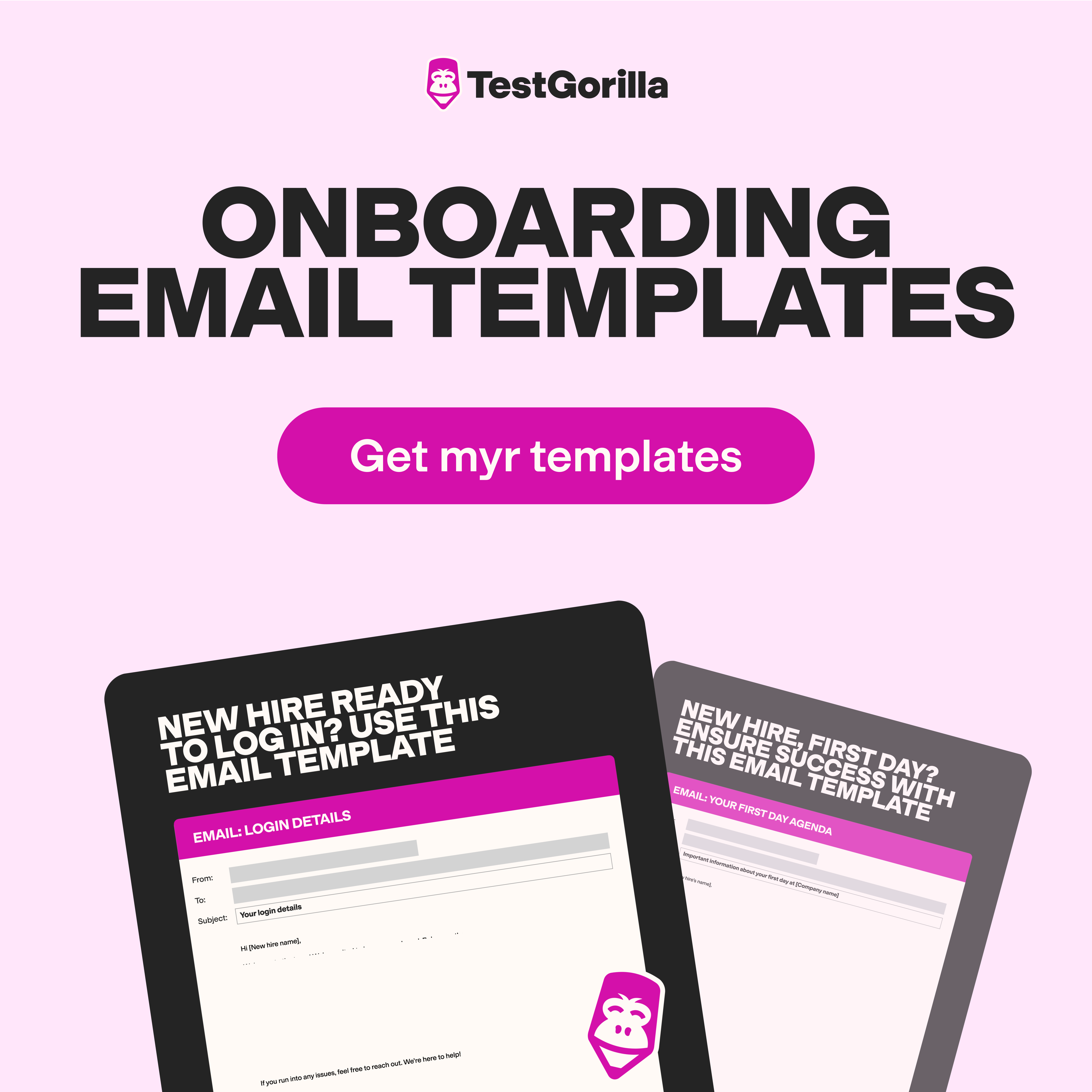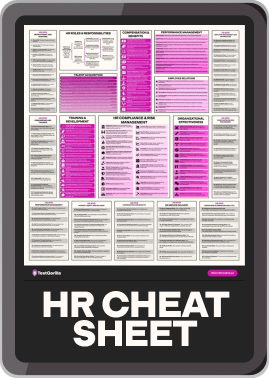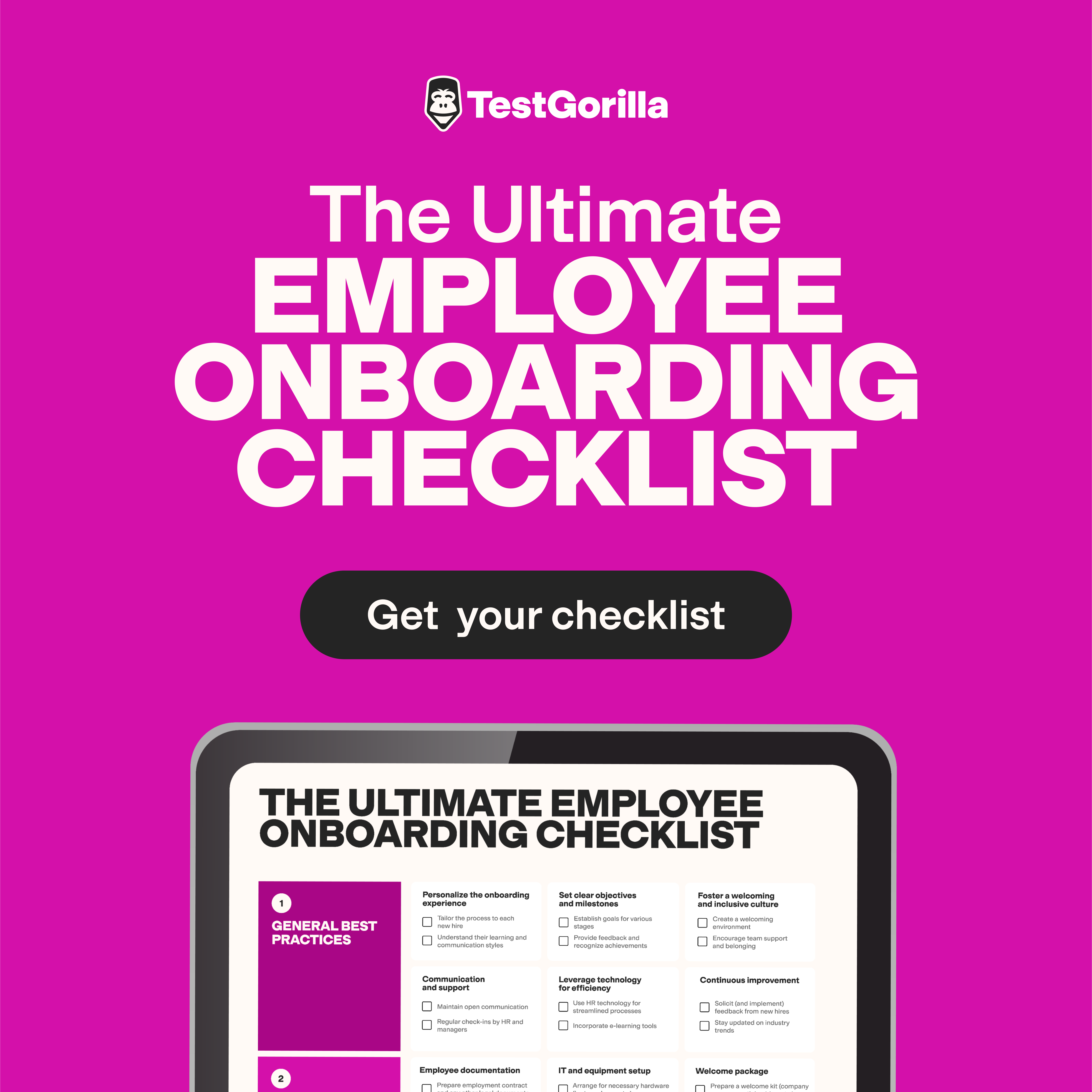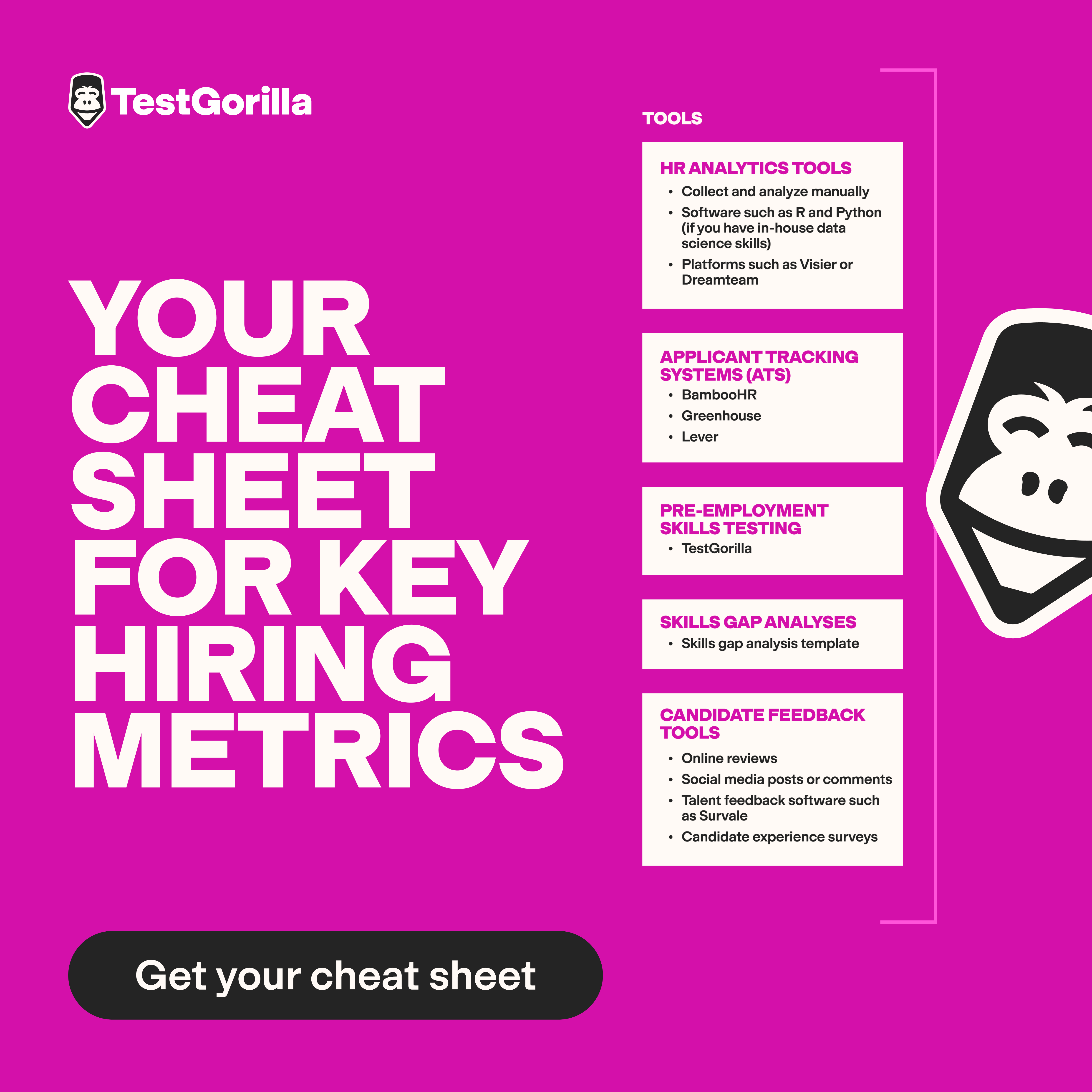UX/UI designers play a key role in creating user-friendly, intuitive, and visually appealing apps or web interfaces that boost customer satisfaction. But companies often mis-hire for this role by focusing on the wrong skills or leaning too heavily on resumes and interviews without seeing candidates in action.
The result? Ineffective products that frustrate users, lower sales, and put you at a huge competitive disadvantage.
Luckily, there are easy ways to avoid this.
In this article, we discuss the top nine UX/UI design skills to look for and share expert tips on how to properly vet candidates so you can hire the best talent for your company.
Key takeaways
Good UX/UI designers play a critical role in developing products that meet users' needs and preferences so you can attract and retain customers and drive sales.
To find the best designers, look for a mix of hard and soft skills – from design thinking, wireframing, and prototyping to solid communication skills, attention to detail, and problem-solving abilities.
The most accurate way to assess these skills is through pre-employment testing – for instance, TestGorilla helps you screen applicants so you can find the best ones quickly.
What is UX/UI design?
UX (user experience) and UI (user interface) design is about creating digital products that are enjoyable and easy to use by carefully considering what users are looking for and how they interact with an app or website.
Here’s what UX/UI designers typically do:
Research user needs and behaviors and provide insights into their preferences and expectations.
Design wireframes and prototypes, including organizing intuitive layouts, placing features where users expect to find them, and making deliberate design decisions to maximize online sales.
Test designs for their usability and make adjustments based on feedback so that users can navigate products effortlessly.
Work closely with developers to ensure all visual and functional elements of the design are implemented correctly.
For example, a UX/UI designer working on a music streaming app can help determine the optimal placement for play buttons, volume control, and even subscription options based on user habits and ergonomic factors.
Overall, investing in a good UX/UI designer can make all the difference in attracting new users, converting them to paying customers, and ensuring they consistently choose your product over others.
9 UX/UI design skills to look for
The best UX/UI designers possess the right combination of technical design and soft skills to interact with users, understand their needs, and translate these to the relevant teams.
Here are nine essential UX/UI design skills to look for when screening applicants.
Technical expertise
1. User research and design thinking
UX/UI designers must gather users' preferences and pain points through surveys, interviews, focus groups, and more and use these insights to create products that resonate with customers' needs.
2. Wireframing and prototyping
Just like you need to sketch a blueprint before building a house, UX/UI designers use wireframing and prototyping to map out, visualize, and mock up the structure and flow of a digital product before building it.
3. Usability testing
This process involves testing products and features with real users across desktops, tablets, and mobile phones and using customer feedback to adjust designs for an intuitive and consistent experience.
4. Information Architecture (IA)
Good UX/UI designers must structure and organize a product's content in a way that's logical, easy to find and understand, and enhances user engagement.
5. Software proficiency
To succeed in this role, UX/UI designers must be familiar with graphic design tools like Adobe Illustrator, wireframing and prototyping software like Sketch and Figma, and user research solutions like Survey Monkey.
Soft and cognitive skills
1. Communication
Good active listening allows UX/UI designers to truly grasp users' needs and pain points, while strong verbal and written communication helps them articulate ideas clearly and collaborate effectively with developers and other teams.
2. Problem-solving
The best candidates aren't just good at designing – they can also tackle unexpected challenges that crop up and find creative solutions that align with both users' needs and business goals.
3. Empathy
The best UX/UI designers see through the user’s eyes. They understand the needs, emotions, and frustrations of end-users, enabling them to create experiences that genuinely resonate with their customers.
4. Attention to detail
A sharp eye for detail helps UX/UI designers create polished, error-free user interfaces, boosting user experience across all platforms.
The best insights on HR and recruitment, delivered to your inbox.
Biweekly updates. No spam. Unsubscribe any time.
How to assess UX/UI design candidates
As the world goes digital, there's a growing demand for UX/UI designers across all industries. That's why it's critical to act fast when the applications pour in and secure top talent before the competition.
Pre-employment tests are the best way to quickly screen incoming applications without compromising on the quality of your hire. A platform like TestGorilla, for instance, offers 400+ science-backed tests to thoroughly evaluate your candidates on their real-life skills – something you simply can't get with resume screening.
You can combine up to five tests and create a custom UX/UI design assessment for the job. Let's look at some of the most relevant tests for the UX/UI design role.
Role-specific skills
UX/UI Design test: Measures candidates' skills in design principles, prototyping, testing, and the ability to create products that align with users' needs and preferences.
Design Thinking test: Focuses on candidates' skills in adopting a user-centric approach, framing and defining problems, coming up with innovative ideas and solutions, and testing and iterating designs.
User Experience Research test: Evaluates applicants' abilities to use various research methodologies and tools to gather and interpret insights, such as users' habits, preferences, and expectations.
Figma test: Helps to identify candidates who are well-versed in prototyping and collaborating using Figma.
Soft skills and cognitive abilities
Communication test: Evaluates candidates' verbal and written communication skills and active listening abilities, ensuring they can articulate ideas clearly and work seamlessly with users and cross-functional teams.
Attention to Detail (Visual) test: Assesses how well candidates can spot inconsistencies or errors in visual elements, critical for pixel-perfect designs that translate seamlessly across devices.
Problem Solving test: Measures applicants' ability to define unexpected problems, such as user objections, and address them head-on with innovative solutions.
Personality and culture
Culture Add test: Identifies candidates whose values align closely with your company's principles and culture.
16 Personalities test and other personality assessments: Help you assess traits like empathy, conscientiousness, and collaboration – key to success in this role.
Motivation test: Identifies if candidates' expectations are aligned with the job offer you have in mind for your UX/UI design role.
By rolling out these tests, you get a holistic picture of each candidate's suitability for the UX/UI design role and can use this data to shortlist your top picks. Combine this approach with the right UI and UX interview questions to hire experts who fit your needs like a glove.
UX/UI design skills FAQs
Still need more information? Check out our answers to some frequently asked questions.
Do UX designers need coding skills?
No, UX designers don't need coding skills. They focus on researching and understanding users' behaviors, needs, and motivations to design digital products that provide better user experiences. That said, coding skills might be useful in collaborating with developers more effectively.
For more information on hiring UX designers, check out our complete blog on how to hire a UX designer.
What’s the difference between UX and UI?
User interface (UI) refers to all the visual aspects of a digital product that users interact with – for example, buttons and icons. User experience (UX), on the other hand, is defined by the kind of interaction users have with those products and how they feel about them – for instance, having a smooth vs. tricky time navigating an app.
If you're looking specifically for a UI designer, read our complete guide to hiring UI designers.
Can one person be a UX and a UI designer?
Yes, it’s possible. UX and UI design frequently overlap, so many companies and organizations choose to combine these roles into one.
How much do UX/UI designers earn?
Salaries depend on different factors, including job location and seniority. In the US, the median wage is $89,418 per year for UI designers and $114,595 per year for UX designers.
Land skilled UX/UI designers with TestGorilla
Great UX/UI designers help you discover what truly matters to your users by designing products that provide customers with a first-class experience and keep them coming back. That's why it's so crucial to snag the most skilled designers before the competition scoops them up.
TestGorilla's skills tests give you a quick and effective way to do this. You can create a custom UX/UI design assessment that measures candidates' technical abilities, soft and cognitive skills, attributes, and values, helping you shortlist the best candidates and move swiftly on with your hiring process.
Register for a free account or schedule a live demo with TestGorilla today.
You've scrolled this far
Why not try TestGorilla for free, and see what happens when you put skills first.

